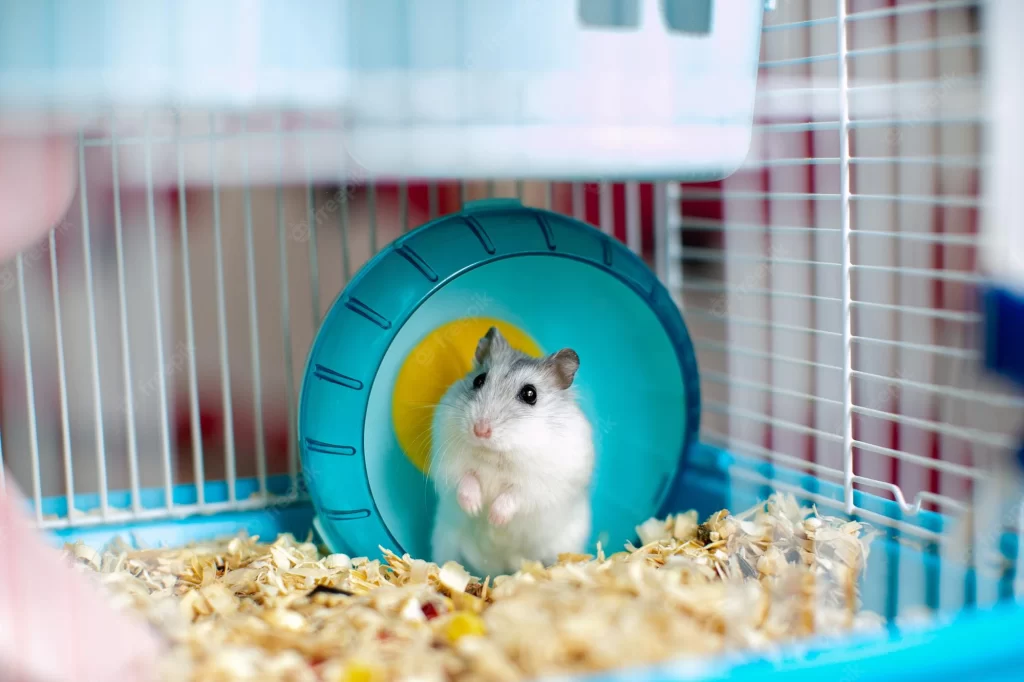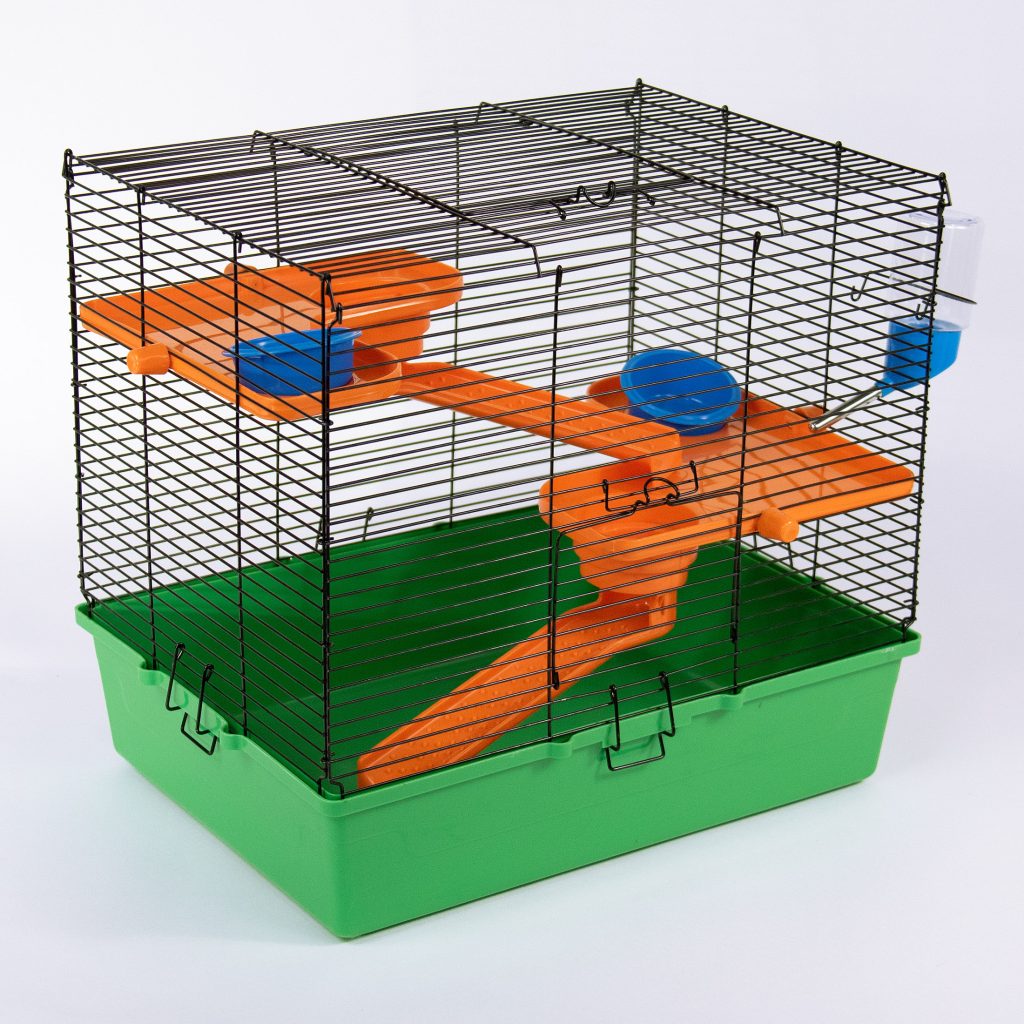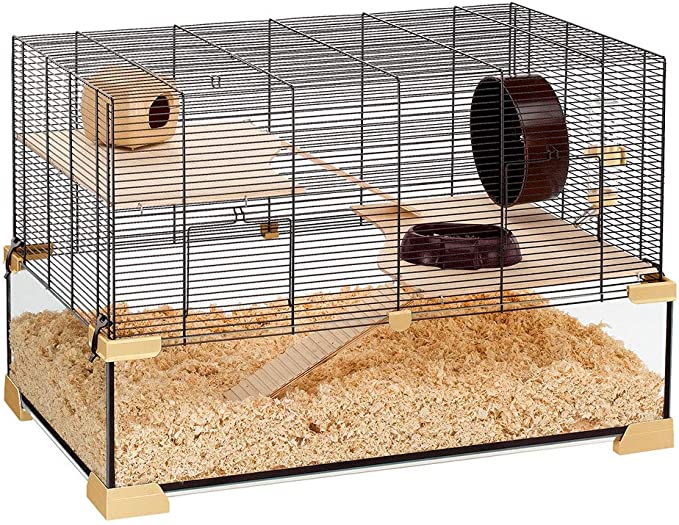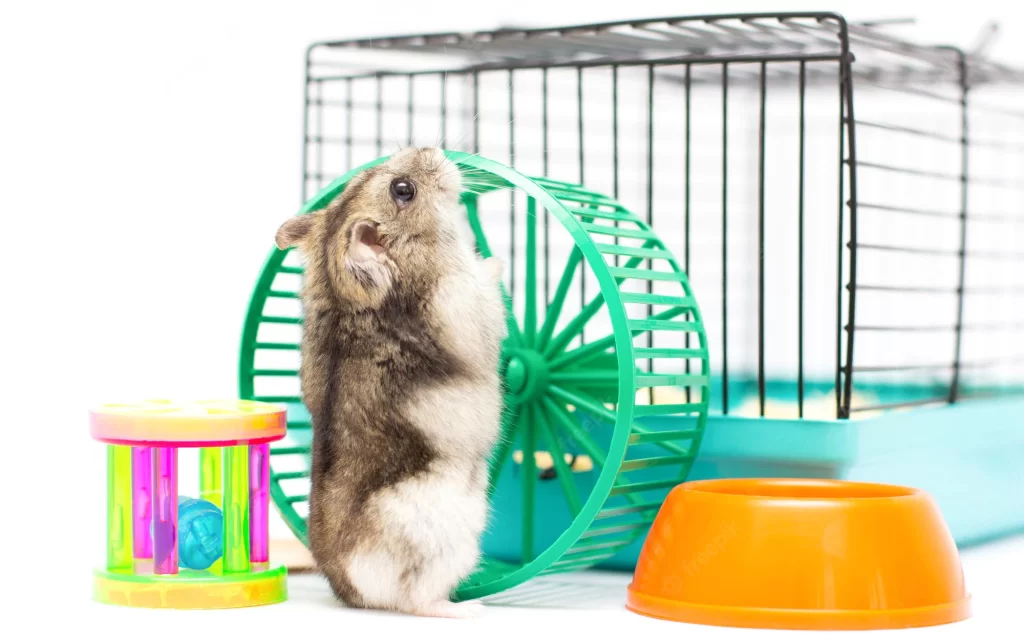Because your hamster will spend the majority of its time within its cage, it’s critical that you get the correct size for them. The cage for your hamster is most likely the most significant investment you’ll make in their care. Your hamster’s cage should be easy to clean, spacious, and spacious enough for them to run around in, as well as escape-proof!

Hamsters are highly active animals, capable of running 5-8 kilometers per night in the wild, and the size of the cage you purchase is possibly the most critical consideration. Other than size, there are numerous other important aspects to consider, all of which can have a significant impact on your hamster family’s health and happiness.
We’ll look at how to determine the correct cage size for your hamster in this post, as well as some other key considerations.
Things you need to know first:
There are more than 20 species of hamsters, but only three are commonly kept as pets. Keep in mind that hamsters of different species should not be kept together, and hamsters of the same sex will most likely fight. In this instance, smaller, single cages for each hamster are preferable. Varied hamster species will require different habitats, including space and cage size. Syrian Hamsters, Dwarf Hamsters, and Chinese Hamsters are the most common hamster species kept as pets.

Step 1 — Minimum Size requirements:
Syrian Hamsters:
The minimal amount of floor space required per Syrian Hamster is approximately 900 square inches. This is around 40 × 20 inches for a standard cage, with a bedding depth of around 10 inches. Of course, this is the bare minimum area required to accommodate them, and you should always aim for more. To accommodate bedding and a small wheel, the height should be at least 24 inches tall. Higher is better, just as it is with size.

Dwarf and Chinese Hamsters:
Even though Chinese and dwarf hamsters are little, they require enough area to run around in. Aim for at least 700 square inches of floor space per hamster, or about 4015 inches per hamster. Again, the height should be at least 24-inches, and there should be enough room for proper bedding, with a depth of 6-8 inches.
It’s important to remember that these are only basic requirements; the more space your hamsters have, the happier they’ll be, so always seek to exceed them. This is especially true for hamsters who dislike being out of their cage and if you plan to fill their cage with a lot of toys and wheels.
Step 2 — Types of Cages:
You’ll need to determine what type of cage you want to home your hamsters in now that you have a fair estimate of their size. Hamster cages come in a variety of shapes and sizes, each with its own set of advantages and disadvantages. The cage material, ventilation, simplicity of cleaning, and substrate appropriateness are the most critical factors to consider.


Wire Cage:
The most widely available and often used cages for hamsters are wire or mesh cages. Chew-proof, well-ventilated, and quick and easy to clean, they’re a terrific choice. The disadvantage is that most variations are not deep enough for the appropriate amount of substrate, preventing your hamster from burrowing. Furthermore, the substrate and bedding can be readily pushed out of the wire sides, causing a mess.

Tank & Wire Top:
For hamsters, these designs are definitely the best option. They have a plastic or glass tank base with plenty of room for burrowing and substrate, as well as a clip-on wire or mesh top. They are adequately ventilated, easy to clean, and somewhat escape-proof, making them the best of all worlds.

Vivarium or Aquarium:
Aquariums are not designed specifically for hamsters, yet they can be effectively housed in them. They’re usually constructed of glass or Perspex and have a mesh top, allowing your hamster to burrow to its heart’s delight. The disadvantage of these tanks is that they have very little airflow, even with the mesh top. They’re also hefty, which makes moving and cleaning them tough.
Step 3 — Cage Location:

The size you choose will be influenced by the place where you intend to keep your hamster. Larger cages are more difficult to move about and have fewer alternatives for where they can be placed. Exposure to natural sunshine, night and day cycles, air circulation, and temperature regulation are all required. The cage should ideally be placed on a table above the floor, adjacent to a window for airflow and sunlight, in a closed room for temperature management, and away from other animals such as cats and dogs.
Step 4 — Accessories:

However, cage size minimums for distinct species aren’t the only factor to consider. While having enough space is crucial, a happy hamster also needs to be able to exercise their natural inclinations like they would in the wild. Hamsters are naturally energetic creatures who enjoy foraging.
Their cage should allow them to engage in these natural behaviors, and you should include items that will encourage them to do so. Foraging will be encouraged by scattering their food throughout the cage, tunnels and wheels will keep them active and entertained, and varied substrates such as wood and sand baths will provide them with new textures to explore. Because hamsters have poor eyesight, this range of textures and scents will provide them with the sensory stimulation they need to be happy.
Hamsters also enjoy having a “house within a home” where they can sleep and have some privacy. In addition, the more hamsters you have, the more space you’ll require. These extras obviously take up room, so keep that in mind while deciding on the ideal cage size for your hamster.
Final Thoughts:
When it comes to choosing the correct size cage for your hamster, there are various factors to consider. There are certain space requirements that hamsters must meet in order to be happy and healthy, as well as accessories that will not overcrowd the cage. The optimum hamster cage size should accommodate your hamster as well as tunnels, wheels, and substrate to dig in, as well as being light and mobile enough to roam around effortlessly. Finally, the larger your hamster cage is, the more difficult it is to clean, which is especially essential if you have more than one hamster.







